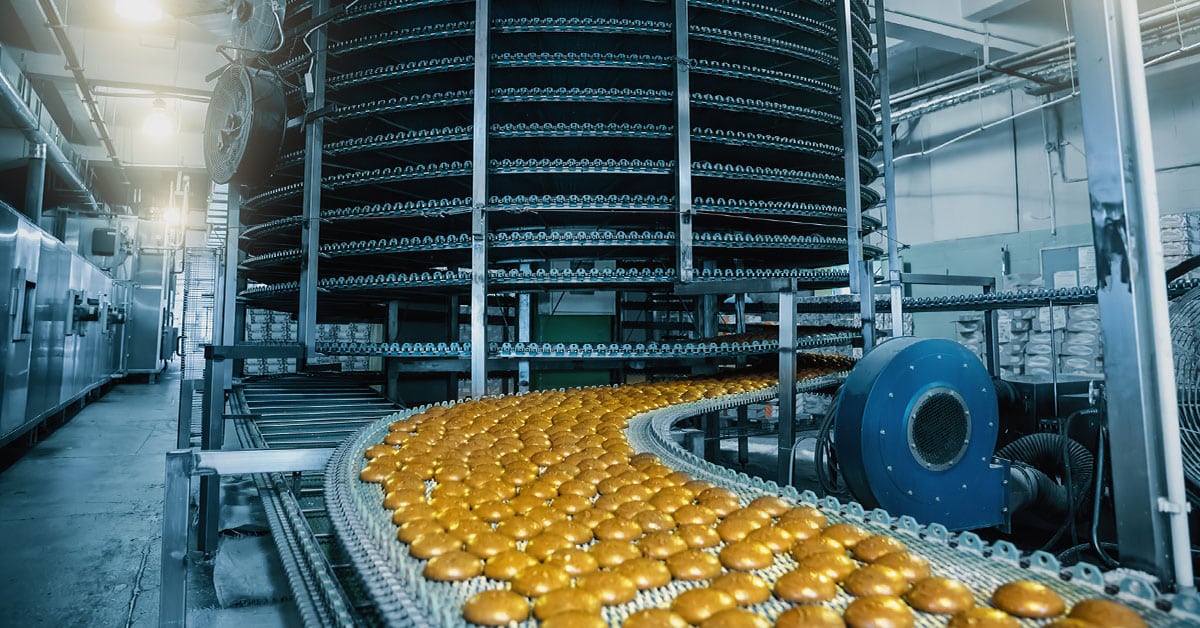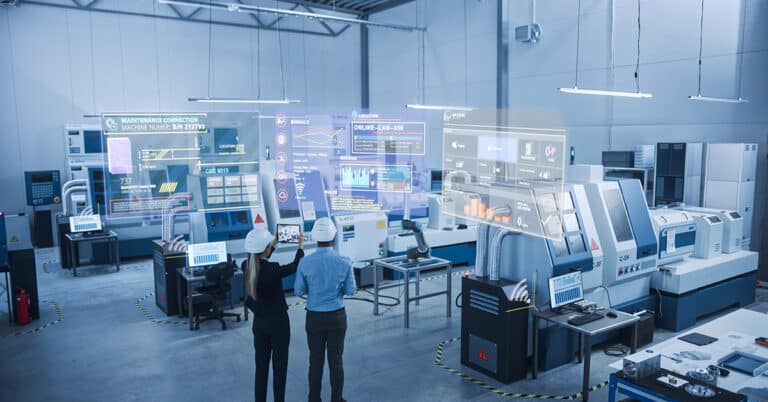Industrial sensors are more accessible and commonplace than ever in manufacturing facilities, with the benefits of sensors becoming increasingly apparent in facilitating predictive maintenance strategies. Industrial humidity sensors are extremely effective in this area, helping to improve maintenance efficiency, reduce costs and increase the value of maintenance tasks performed.
With applications in ambient environment monitoring, air quality monitoring and equipment performance tracking, industrial humidity sensors play a key role in any comprehensive predictive maintenance approach. Read on to learn how.
What is a humidity sensor?
Humidity sensors measure the amount of moisture present in the air, convert that measurement into an electric signal and then send the output to a display device or a monitoring system (or both). Humidity sensors are also called hygrometers, and can operate in one of three ways: capacitive, resistive or thermal measurement. Each type of humidity sensor for industrial applications is able to detect atmospheric changes in the surrounding air in order to provide an accurate humidity calculation, and we will look at each type in further detail below.
Humidity sensor vs. humidity transmitter
Humidity sensors and humidity transmitters are similar but inherently different products, although each can and should play a central role in air monitoring aspects of industrial maintenance. The key difference is that a humidity sensor contains the means of actually measuring the humidity present in the air — through capacitive, resistive or thermal means, as outlined below — while an industrial humidity transmitter handles the work of converting, ending and ultimately, rendering useful the signal that the sensor creates.
A humidity transmitter might relay the signal to a display device such as a hand-held or wall-mounted indicator, or it might send the data to a repository or a central monitoring system for tracking and analysis.
Types of industrial humidity sensors
As mentioned, there are three main types of industrial humidity sensors available. Here, we will explore the operating principles of each.
Capacitive humidity sensors
Capacitive sensors measure relative humidity, that is, the amount of moisture present in the air in relation to the maximum amount that can be present at a given temperature. Capacitive sensors operate through two electrode layers contained within a dielectric material that absorbs or releases moisture from the air based on how much water vapor is present. As humidity is absorbed into the dielectric film and makes contact with the electrode, the dielectric constant changes, and this change is used to indicate and measure the humidity level. These types of sensors are typically used in high-temperature environments and any scenario where high sensitivity, even at lower humidity levels, is required.
Resistive humidity sensors
Like capacitive sensors, resistive sensors also measure relative humidity. These sensors operate through a series of electrodes lain on an insulating substrate (typically ceramic) and coated with a humidity-sensitive salt. As airborne water vapor makes contact with the salt coating, causing the ions to become active and create impedance or resistance in an alternating current present in the sensor. This impedance measure is used to create a relative humidity measurement. These types of sensors are frequently used in higher humidity scenarios.
Thermal humidity sensors
Thermal conductivity humidity sensors measure absolute humidity by calculating the difference in resistance between the environment to be measured and a controlled, dry environment. Thermal sensors are useful for high-temperature environments and high corrosion scenarios, as well as other more extreme settings.
Industrial humidity sensor applications
Industrial humidity sensors have numerous applications across manufacturing and maintenance operations. These applications include:
- Monitoring humidity levels in production areas: From pharmaceuticals and medical devices to automotive and aerospace components, humidity monitoring and control are critical concerns for a broad range of manufacturing applications. The intricate, closely controlled materials used in pharmaceutical manufacturing, for instance, can be affected by excess humidity, which can change their makeup to become less effective, or possibly even dangerous. In metal manufacturing operations, excess humidity can speed up corrosion and affect the quality and integrity of parts.
- Food processing and food manufacturing: Excess ambient humidity can affect food quality and may also be an indicator of improper temperature control, which can lead to unsafe end products. Humidity sensors can detect fluctuations in water vapor levels that may indicate infrastructure equipment, such as HVAC, malfunctioning.
- Monitoring inventory areas: As with the metal fabrication application described above, humidity control in inventory and storage areas is critical to control corrosion. Other types of materials and products, such as certain polymers, may degrade more quickly if exposed to higher humidity.
- Process monitoring: When used as a component of overall air quality monitoring, industrial humidity sensors can play a role in detecting the onset of failure conditions in equipment, which can help to facilitate more targeted, efficient and proactive maintenance that reduces downtime and lowers overall costs.
Benefits of humidity sensors
Industrial humidity sensors offer a number of benefits, including:
- Data monitoring/diagnostics: Humidity sensors and transmitters are able to record vast amounts of data, on a constant basis, enabling real-time tracking of humidity scenarios and almost immediate identification of potential issues. With historical tracking and benchmarking of expected humidity and environmental levels, technicians can more effectively carry out diagnostics to identify potential root causes of issues and address them before they lead to damage or downtime.
- Predictive maintenance: With real-time alerts and status tracking, industrial sensors are able to facilitate condition-based monitoring by measuring current levels against expected levels and historical failure patterns. With this information at their disposal, maintenance technicians can schedule an inspection as soon as a potential issue is detected — well before it leads to downtime. With a predictive maintenance strategy in place, manufacturers can make more efficient use of maintenance resources, extend equipment and component life, carry out more targeted maintenance that addresses actual problems, and vastly reduce or eliminate unplanned downtime.
- Reduced energy consumption and improved sustainability: Using humidity sensors to monitor HVAC performance and the ambient environment in facilities can help to create more efficient energy usage, preventing scenarios where equipment is operating at sub-optimal conditions and drawing more energy than it needs to.
With this understanding of how humidity sensors play a role in environmental monitoring and machine condition monitoring, you can now see the benefits of this technology in creating a more efficient and effective overall operation. ATS provides predictive maintenance services including infrastructure, equipment, technicians, training and more. To learn more, contact us today.


